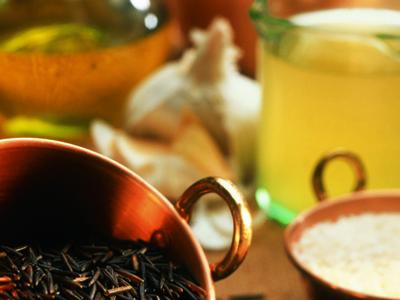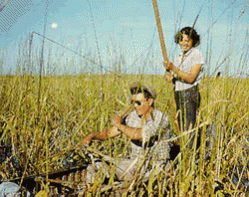Share This
We have a lot to celebrate over here at the Whole Grains Council; not only is it Whole Grains Month but one of September’s Grains of the Month is also the super cool, history rich, and wonderfully diverse Wild Rice. That’s right, we’re going wild for wild rice – I couldn’t resist, I just had to say it!
As many of you know, the Whole Grains Council is part of Oldways, whose mission is “inspiring good health through cultural food traditions and lifestyles.” We believe that eating in the “old ways” offers a plethora of delicious, healthy benefits and what better way to encourage the old ways of eating than through ancient grains? As we’ve mentioned before, ancient grains are one of the year’s biggest trends and are showing up on plates left and right.
Wild rice just happens to be one of the most ancient of grains, dating back almost 12,000 years. The grain has a long and intriguing history here in the United States; traces of wild rice have been found by archaeologists in the “rice camps” of the Sioux Indians, where it was stored in bark containers called “makuks” and provided healthy energy throughout the long winters in the Midwest.
The only grain native to North America, wild rice is grown all over the continental United States from Florida to New Jersey, producing approximately half a million pounds of “wild” varieties each year. It is even the state grain of Minnesota, where it is a thriving crop and important part of Minnesotan history and culture, and is still harvested in a manner that maintains the integrity of traditional growing. Wild rice, actually a semi-aquatic grass and not a type of rice, grows on the banks of shallow lakes and rivers, where boats and canoes are “poled” through the lake crop by one person (See vintage photo below, from the University of Minnesota). A second person pulls down the branch of the rice plant, and whacks it with a stick that sends the ripe kernels showering into the boat. The rice kernels are then “parched,” which includes ripening and roasting, or “parboiled.” Parching is the traditional method and is used in Minnesota, while parboiling is more often used for farm grown varieties.
With its rich, earthy flavor, high protein and fiber content, wild rice has quickly been growing in popularity. Today, farm grown varieties of wild rice are cultivated all over the world, from California to Hungary and Australia. It has become a popular alternative to the ubiquitous quinoa salad and makes for a beautiful side dish, particularly during the autumnal months – not only is wild rice amazingly delicious but it is also quite exquisite to look at. What more could you ask for? Wild rice is quickly popping up on menus across the country, making appearances in soups, wild rice cakes, and casseroles, just to name a few.
For more information, cooking, and storing tips, visit Whole Grains 101: Wild Rice and join us in celebrating Whole Grains Month and one of September’s Grains of the Month with some of these great wild rice recipes:
Wild Rice Crusted Salmon
Chicken and Wild Rice Quesadillas
Wild Rice Salad with Pepitas & Sun-Dried Cranberries
Wild Rice and Onion Soup
Wild Rice and Smoked Salmon Fillo Tartlets
(Mallory)



Add a Comment